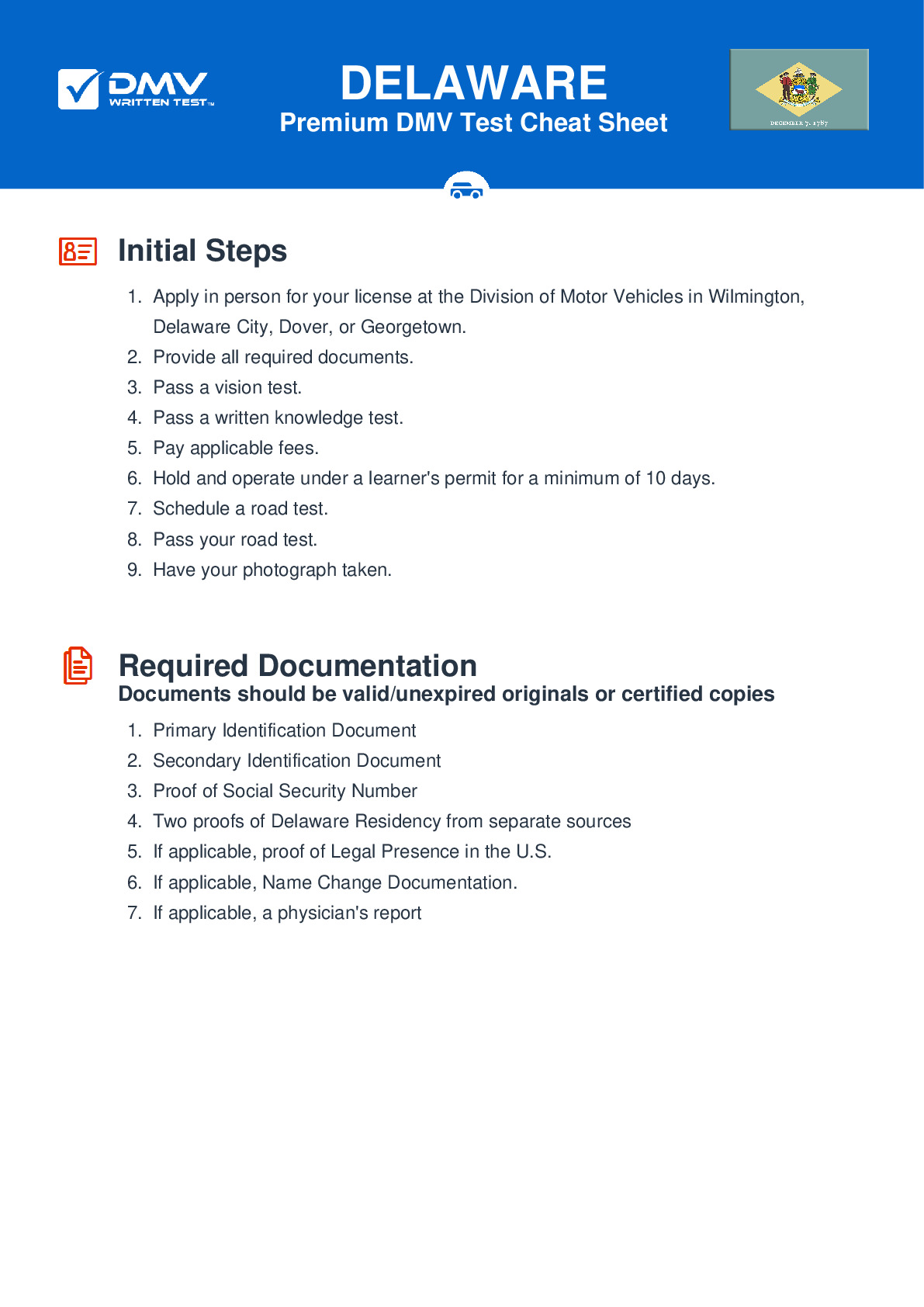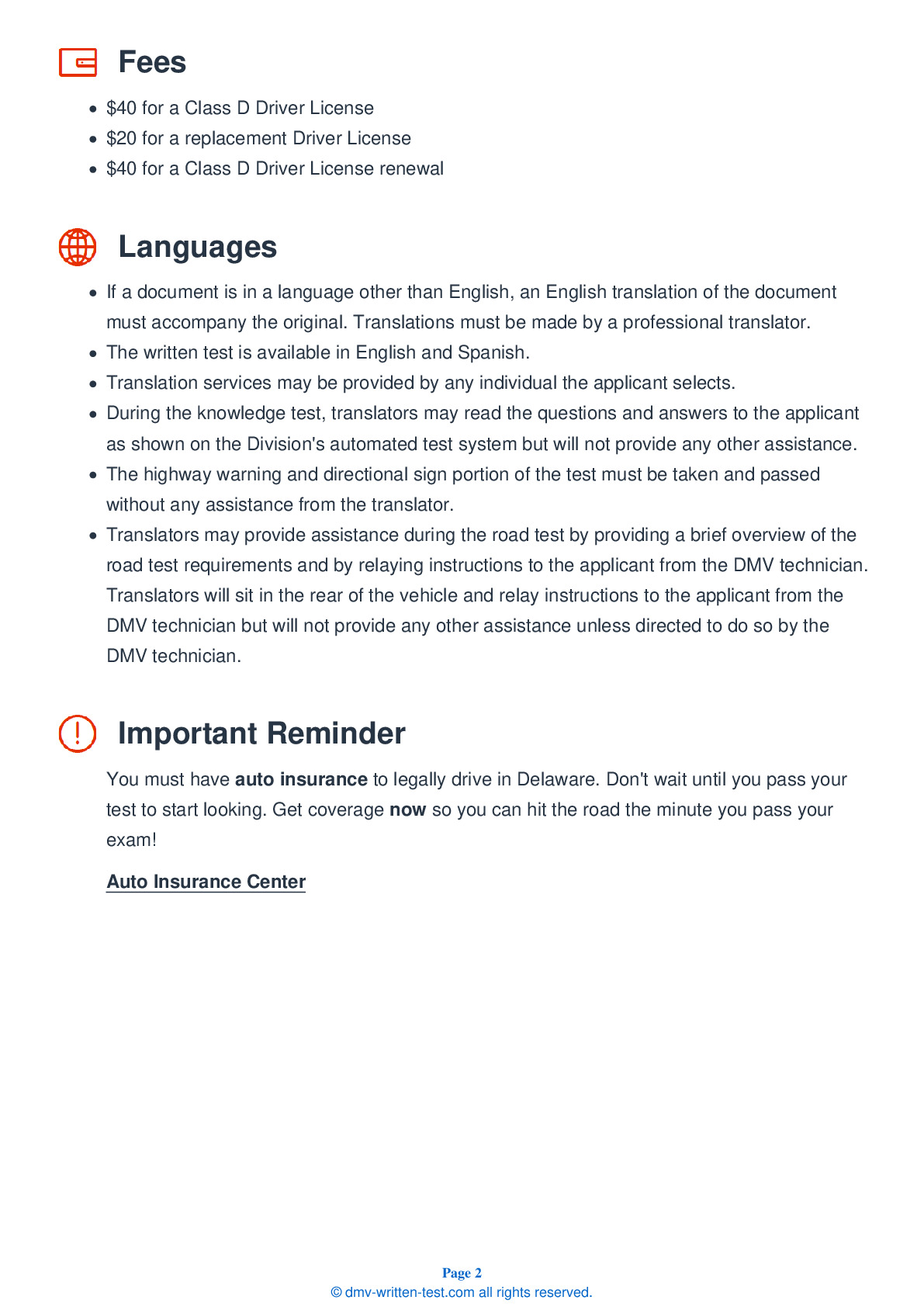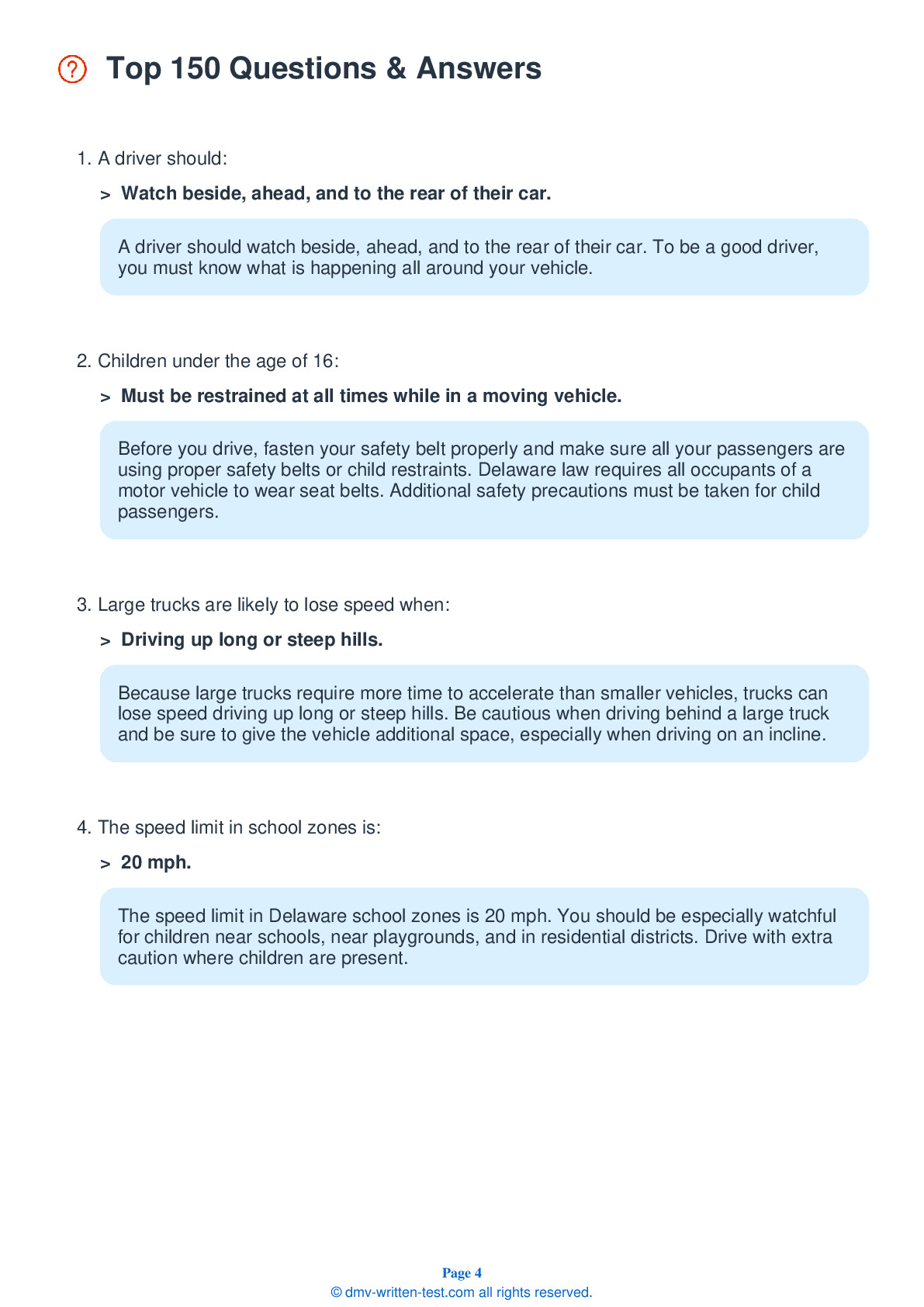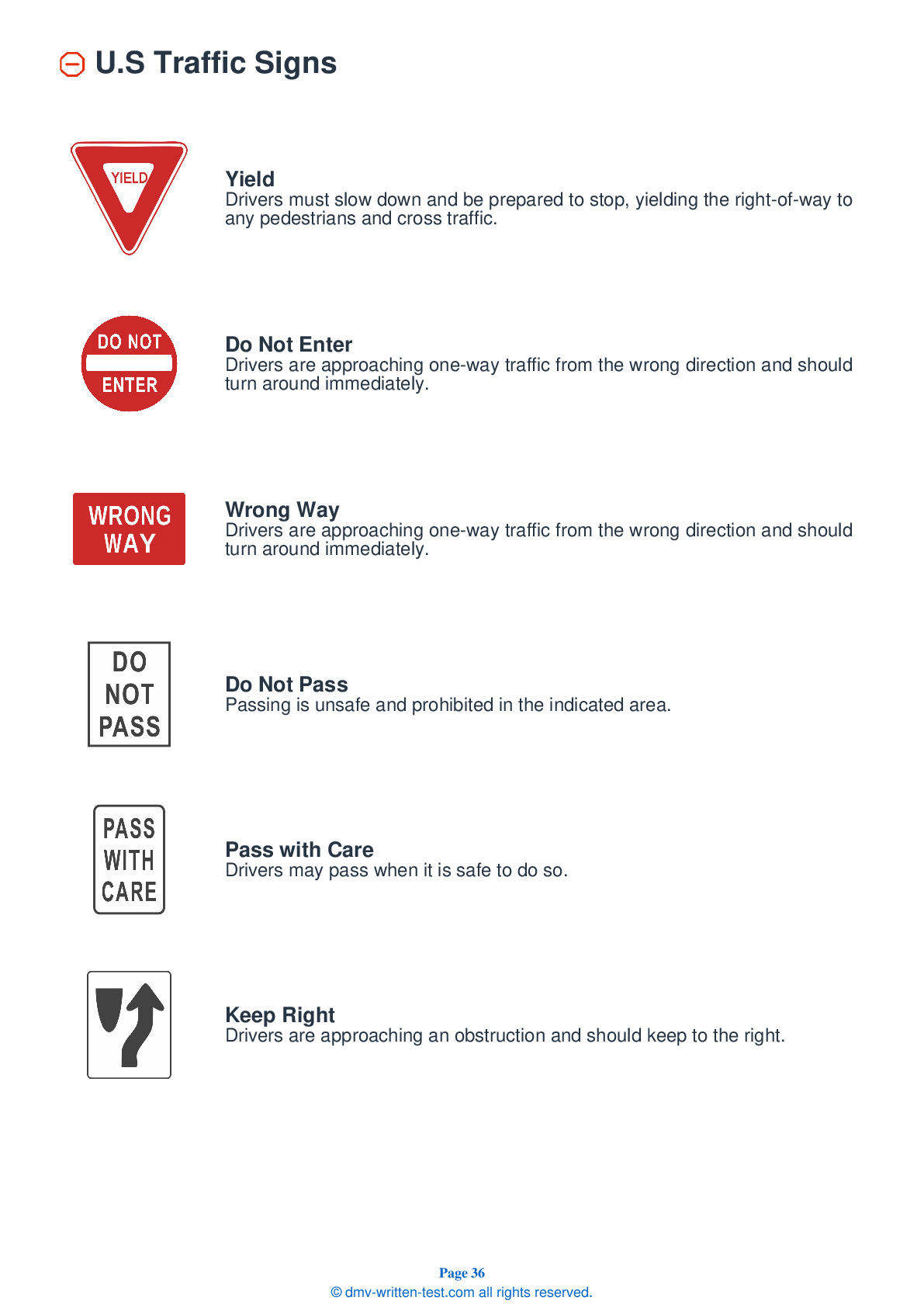2025 Delaware Permit Test 14
The following questions are from real DMV written tests. These are some of the actual permit questions you will face in Delaware. Each permit practice test question has three answer choices. Select one answer for each question and select "grade this section." You can find this button at the bottom of the drivers license quiz. For a complete list of questions and answers for Delaware please visit https://cheat-sheets.dmv-written-test.com/en/delaware/car.
Number of Tests
Number of Question
Passing Score
1. Night driving presents unique problems because:
Explanation
Night driving creates a unique set of problems for drivers. Due to the reduced visibility, it can be difficult to judge distance and the traveling speeds of other vehicles when driving at night. Drivers can see only as far as their headlights allow.
2. If your vehicle has a two-part safety belt system, you should:
Explanation
If your vehicle has a two-part seat belt system, be sure to wear both the lap belt and the shoulder belt. Wearing either part alone greatly reduces your protection. If you have an automatic shoulder belt, be sure to buckle your lap belt as well.
3. As you approach an intersection with a flashing yellow light:
Explanation
A flashing yellow light means that you should slow down, check for cross traffic, and proceed with caution.
4. Prior to entering a curve:
Explanation
You may drive more slowly than the posted speed limit, based on road conditions, but it is illegal to drive any faster than the posted speed limit. Some conditions which require reduced speed for safety include approaching curves or hills where visibility is limited, driving on slippery roads, and driving on roads where animals and pedestrians are present.
5. From top to bottom, the following is the proper order for traffic lights:

Explanation
Warning signs are usually yellow with black markings. They alert you to conditions that are immediately ahead. This sign warns drivers about the presence of traffic signals at an intersection ahead.
6. Collisions are more likely to happen when:
Explanation
Collisions are more likely to happen when one driver moves faster or slower than the other vehicles on the road. Driving faster than other traffic increases your chance of being involved in a collision. Driving more slowly than other traffic is also dangerous because it can increase the risk of a rear-end collision with your vehicle or cause other drivers to swerve to avoid hitting you.
8. If your car's suspension is bad, it can cause:
Explanation





